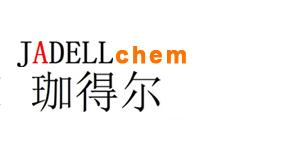Recombinant Human Interleukin-3 是一种造血细胞因子,对血小板和中性粒细胞计数具有良好效果,对继发性造血功能衰竭具有治疗效果。
Synonyms
rHuIL-3; Hematopoietic growth factor; Mast cell growth factor; MCGF; Multipotential colony-stimulating factor; P-cell-stimulating factor
Species
HumanSource
E. coli Accession
P08700 Gene ID
3562 Molecular Weight
Approximately 15.2 kDa AA Sequence
MAPMTQTTPL KTSWVNCSNM IDEIITHLKQ PPLPLLDFNN LNGEDQDILM ENNLRRPNLE AFNRAVKSLQ NASAIESILK NLLPCLPLAT AAPTRHPIHI KDGDWNEFRR KLTFYLKTLE NAQAQQTTLS LAIF Biological Activity
The ED50 is <0.5 ng/mL as measured by TF-1 cells, corresponding to a specific activity of >2 × 107 units/mg. Appearance
Lyophilized powder. Formulation
Lyophilized after extensive dialysis against PBS. Endotoxin Level
<0.2 EU/μg, determined by LAL method. Reconstitution
Reconstitute the lyophilized recombinant Human Interleukin-3 (rHuIL-3) to 100 µg/mL using ddH2O or diluted with PBS. Storage & Stability
Lyophilized recombinant Human Interleukin-3 (rHuIL-3) is stored at -20°C. After reconstitution, it is stable at 4°C for 2 weeks or -20°C for longer. It is recommended to freeze aliquots at -20°C or -80°C for extended storage. Shipping
Room temperature in continental US; may vary elsewhere. Background
Interleukin-3 (IL-3) is aglycoprotein belonging to the hematopoietic growth factor family that in preclinical in vitro and in vivo studies has exhibited a multilineage activity. Recombinant human interleukin-3 (rhIL-3) enhances the mobilization of peripheral blood progenitor cells by recombinant human granulocyte colony-stimulating factor (rhG-CSF)[1]. Human interleukin-3 (hIL-3) is a multipotent hematopoietic cytokine produced by mitogen and antigen-activated keratinocytes, T-lymphocytes, mast cells, NK cells, monocytes and endothelial cells. The hematopoietic progenitor cells are proliferated and differentiated with the help of hIL-3 protein into mature erythrocytes, mast cells, megakaryocytes and granulocytes. The potential use of hIL-3 protein has been extensively tested in various clinical applications such as bone marrow transplantation, hematological malignancies, cytopenias, aplastic anemia and various types of cancer[2] |



